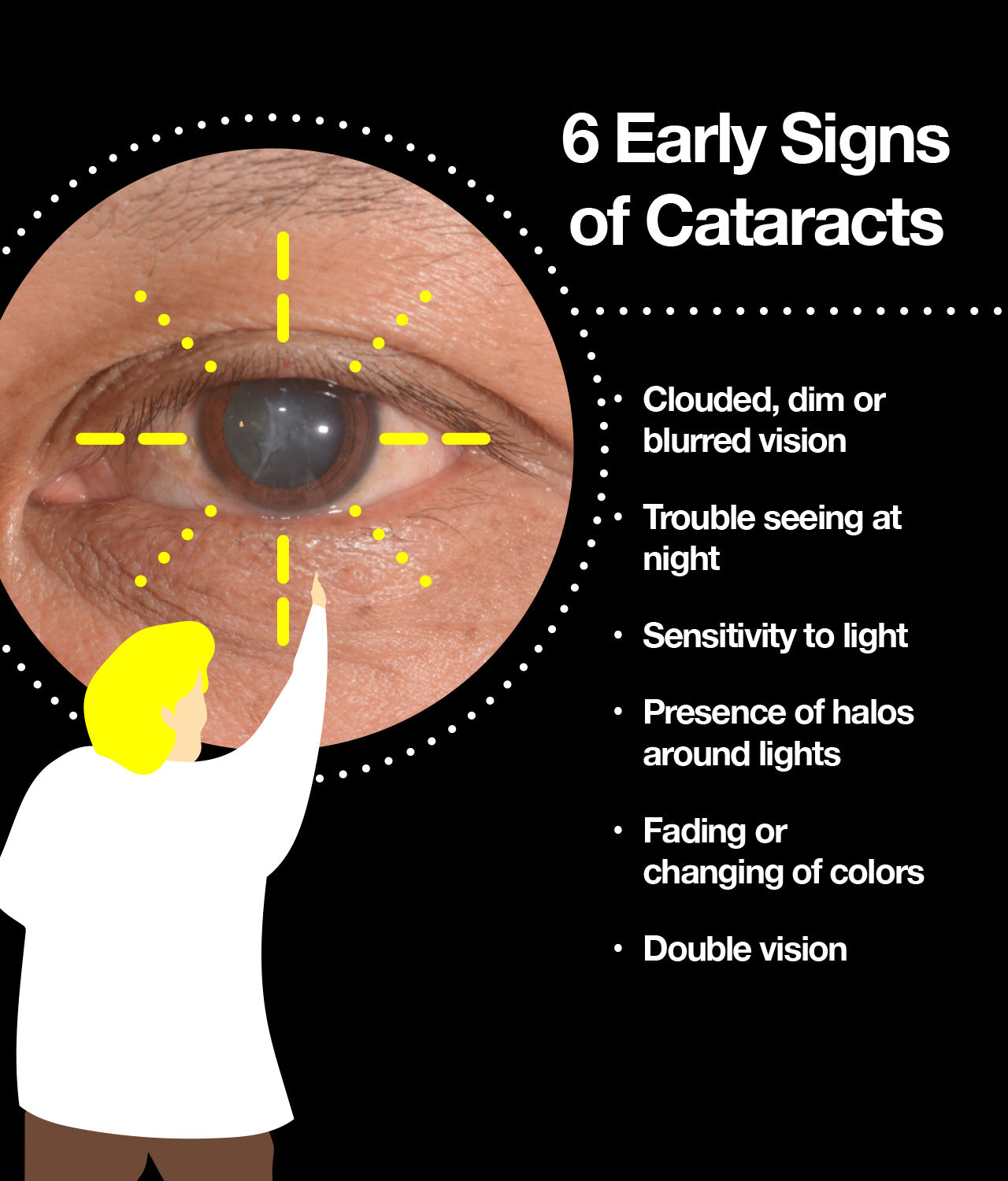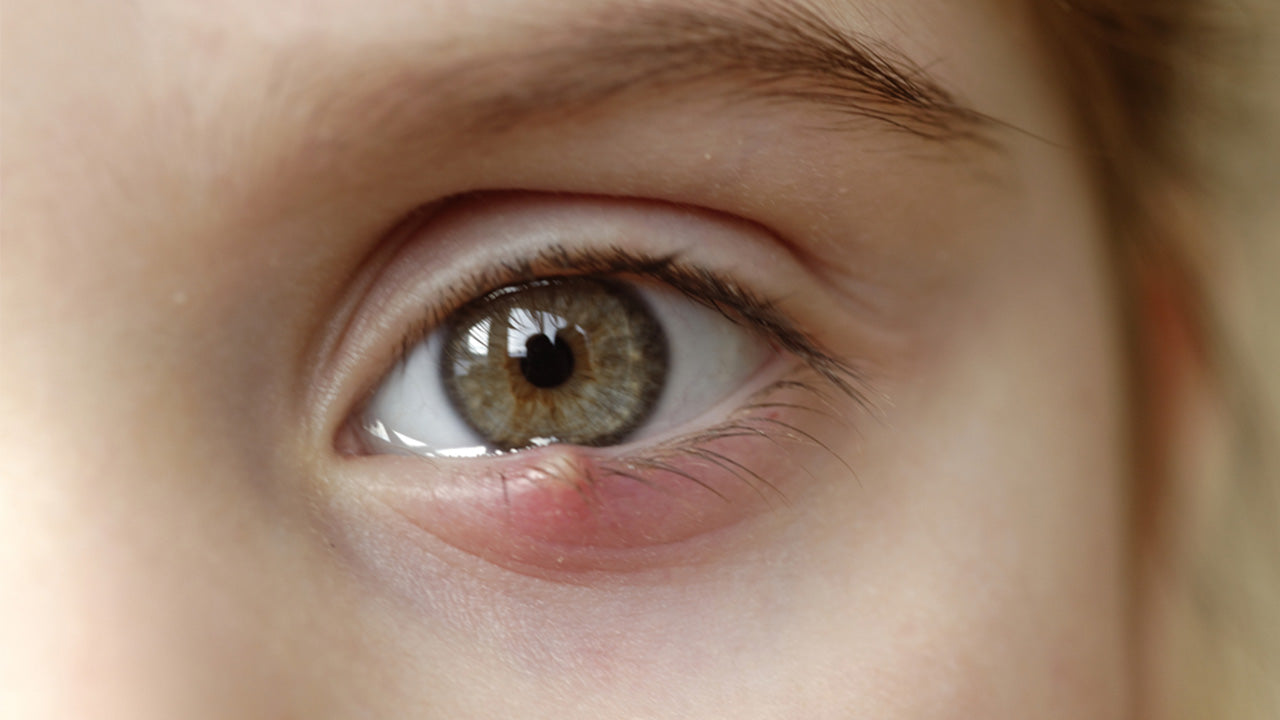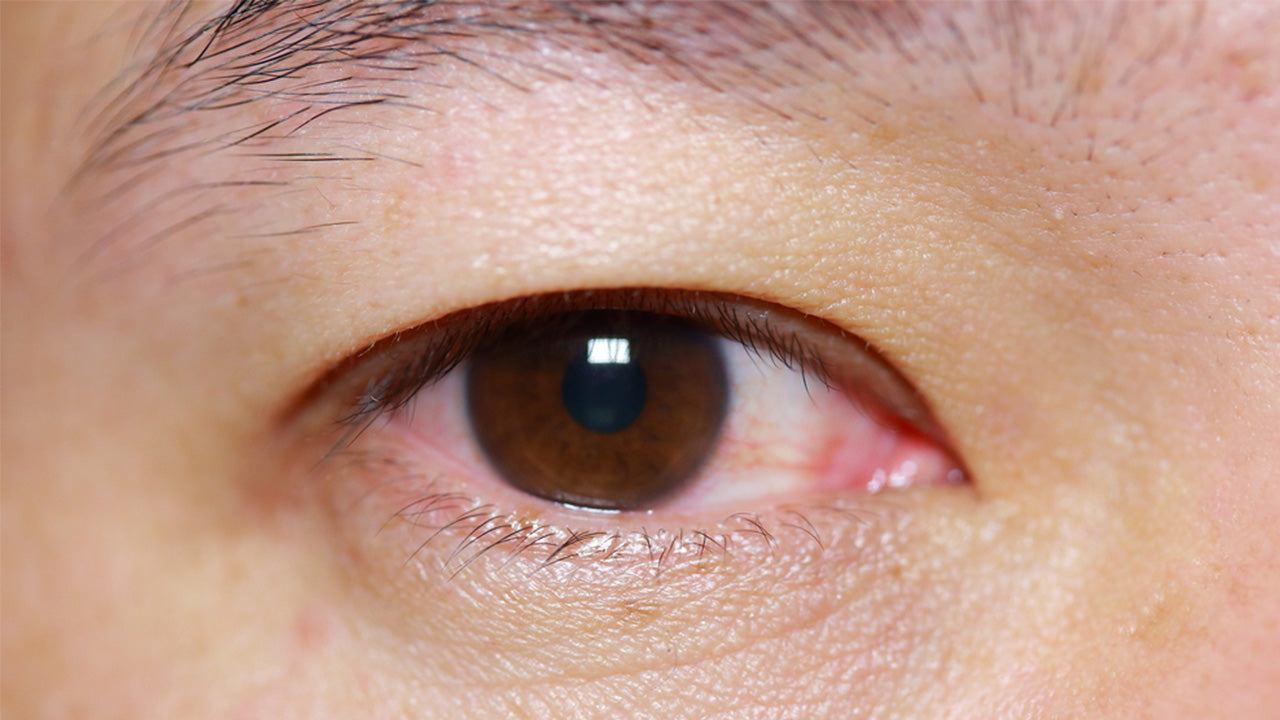What Causes Cataracts? Plus, Information on Symptoms, Different Types of Cataracts and Treatment Options
 By: by Amino Science
By: by Amino Science

Most of us have heard of cataracts, but we might not realize the severity of this eye condition. Particularly common in older adults, cataracts cause a clouding of the lens of the eye. As cataract development progresses, it begins to affect vision. According to the National Institutes of Health, by age 80 more than half of all Americans have experienced cataracts.
It’s important to note that seniors are not the only ones to develop cataracts. While rates of cataracts are higher among older individuals, age-related cataracts can appear among individuals in their 40s and 50s too. The vision problems associated with cataracts usually take time to develop and tend to be most pronounced in patients over the age of 60.
When left untreated, cataracts can interfere with daily activities such as driving, reading, working, or enjoying hobbies. Familiarizing yourself with the early signs of cataracts is the best way to protect your vision and way of life in the coming years.

Be on the Lookout for Early Symptoms of Cataracts
Most cataracts start out small and affect only a portion of the eye’s lens. In a healthy eye, the clear lens helps to focus light, or an image, onto the retina, an area of light-sensitive tissue located at the back of the eye. Once the light reaches the retina, it's converted into nerve signals that travel to the brain.
A clear lens transmits a sharp image to the retina. However, when cataracts cloud the lens, making it opaque, the image the retina receives will be blurred. At first, the cloudiness may be limited to a small part of the lens, and the vision loss emanating from it may initially be subtle enough to pass unnoticed. The larger a cataract grows, the more it distorts the passage of light into the eye. Eventually, this will result in more noticeable symptoms of cataracts, such as:
- Clouded, dim, or blurred vision
- Trouble seeing at night
- Sensitivity to light
- Presence of halos around lights
- Fading or changing of colors
- Double vision in a single eye
- Fading or yellowing of colors
- Frequent changes to glasses or contact lens prescription
If you’re experiencing one or more of the above cataract symptoms, don’t hesitate to visit an eye doctor to determine the cause of your condition and what you can do to safeguard your eyesight. In the instance that you're experiencing rapid vision changes, seeing flashes of light, or feeling sudden eye pain, you should make an appointment to see your doctor as soon as possible.
What Causes Cataracts?
Cataracts occur when the proteins in the lens start to clump together, creating a cloud. As we discussed in the previous section, the cloud cataracts forming on the eye's lens prevent it from properly focusing light on the retina, which ultimately results in vision loss.
Age-related changes in the eye are far and away the most common cause of cataracts. However, inherited genetic disorders may come with an elevated risk of cataracts. The following list of causes of cataracts comes from information provided by the American Optometric Association as well as other experts:
- Other eye diseases
- Previous eye surgery
- Diabetes and other medical conditions
- Use of corticosteroids for a prolonged period
Additionally, individuals who have a family history of cataracts and those who have suffered previous eye injuries may be at a higher risk.
Distinguishing Between Different Types of Cataracts
While the symptoms and outcomes of cataracts remain consistent, cataract formation does vary somewhat depending on the part of the eye in which the cataract is located. Here's an overview of three of the primary types of cataracts.
1. Nuclear Cataracts
This type of cataract forms in the center of the lens of the eye. The first symptom of this type of cataract tends to be increased nearsightedness. Initially, you may find your reading vision improves. Over time, the lens yellows further and vision loss becomes more extensive. As the cataract continues to develop, the lens may darken so much that it turns brown. Severe yellowing or browning of the lens can make it challenging to distinguish between colors.
2. Cortical Cataracts
When cataracts form on the edges of the lens of the eye, they're called cortical cataracts. This type of cataract begins as light-colored, triangular opacities or streaks at the outer edges of the lens cortex. As the cataract forms further, the streaks start to penetrate the center of the lens and prevent light from passing through it. This is the stage of cortical cataract formation at which you will typically begin to notice symptoms.
3. Posterior Subcapsular Cataracts
These cataracts begin as a small area of opacity near the back of the eye's lens. In this position, they block light from traveling through the lens to the retina. Posterior subcapsular cataracts can make it difficult to read, impair vision in bright light, and give the effect of halos around lights at night. These type of cataracts usually develop more quickly than the others.
It's also possible to be born with cataracts or to develop them during childhood. These cataracts are known as congenital cataracts. In some cases, congenital cataracts are genetic. In others, they stem from an intrauterine infection or trauma. Further causes of congenital cataracts include myotonic dystrophy, galactosemia, neurofibromatosis type 2, and rubella.
How to Treat Cataracts
The vision loss associated with the early stages of cataract formation can often be treated with new eyeglasses, brighter lighting, anti-glare sunglasses, magnifying lenses, or some combination of those measures. When cataract development reaches the point at which those measures no longer help, the next step in cataract treatment is to speak with an eye care professional about cataract surgery.
According to the Mayo Clinic, eye surgery is the only effective cataract treatment. They suggest that individuals be wary of eye drops and other treatments that claim to treat cataracts.
That said, a cataract only needs to be removed when it begins to interfere with everyday activities such as driving, reading, and the like. Waiting to schedule cataract surgery does not make the procedure more complicated or affect the likelihood of success. If the cataract prevents examination or treatment of other eye problems such as age-related macular degeneration or diabetic retinopathy, surgery becomes more pressing.
During cataract surgery, the doctor will use a local anesthetic to numb the area around the eye before replacing the clouded natural lens with a clear, artificial lens. This new lens, also known as an intraocular lens, will stay in your eye permanently. This procedure is the only guaranteed way to safely and completely resolve clouding caused by cataracts.
Cataract surgery is one of the safest and most effective types of surgery. Data shared by the National Eye Institute, a division of the National Institutes of Health (NIH), reveals that approximately 90% of all cataract surgeries result in improved vision. Because cataract surgery is an outpatient procedure, patients can typically return home immediately after. While patients often experience discomfort for a few days after undergoing surgery, most heal completely within two months.
To help speed healing from cataract surgery and improve recovery outcomes, try Heal, an essential amino acid supplement specifically designed for surgical recovery.
6 Tips for Preserving Your Eye Health
While cataract surgery is the only reliable way to treat cataracts and restore lost vision, you can take steps to preserve your eye health for the long term both before and after surgery. Ophthalmologists recommend that patients who have been diagnosed with cataracts do the following:
- Schedule regular eye examinations: If you're under 65, experts recommend going in every other year. Once you turn 65, you should commit to yearly check-ups.
- Protect your eyes from UV light: If you're outside on a sunny day, be sure to wear sunglasses or a hat to keep your eyes safe.
- Limit lifestyle risk factors: Both smoking and excessive drinking have been shown to adversely affect eye health.
- Avoid eye strain: If you're an avid reader, be sure to have a bright light on hand so you can easily see the letters on the page.
- Exercise caution when it comes to nighttime driving: It may not be feasible for you to never drive after the sun goes down, but try not to do it too often.
- Take care of your overall wellness: Diabetes and other chronic medication conditions can impact your eye health, so be sure to stick to your healthcare plan.
Follow these tips to ensure you continue seeing clearly for years to come.


Up to 25% off Amino
Shop NowTAGS: conditions
Join the Community
Comments (0)
Most Craveable Recipes




 833-264-6620
833-264-6620



















